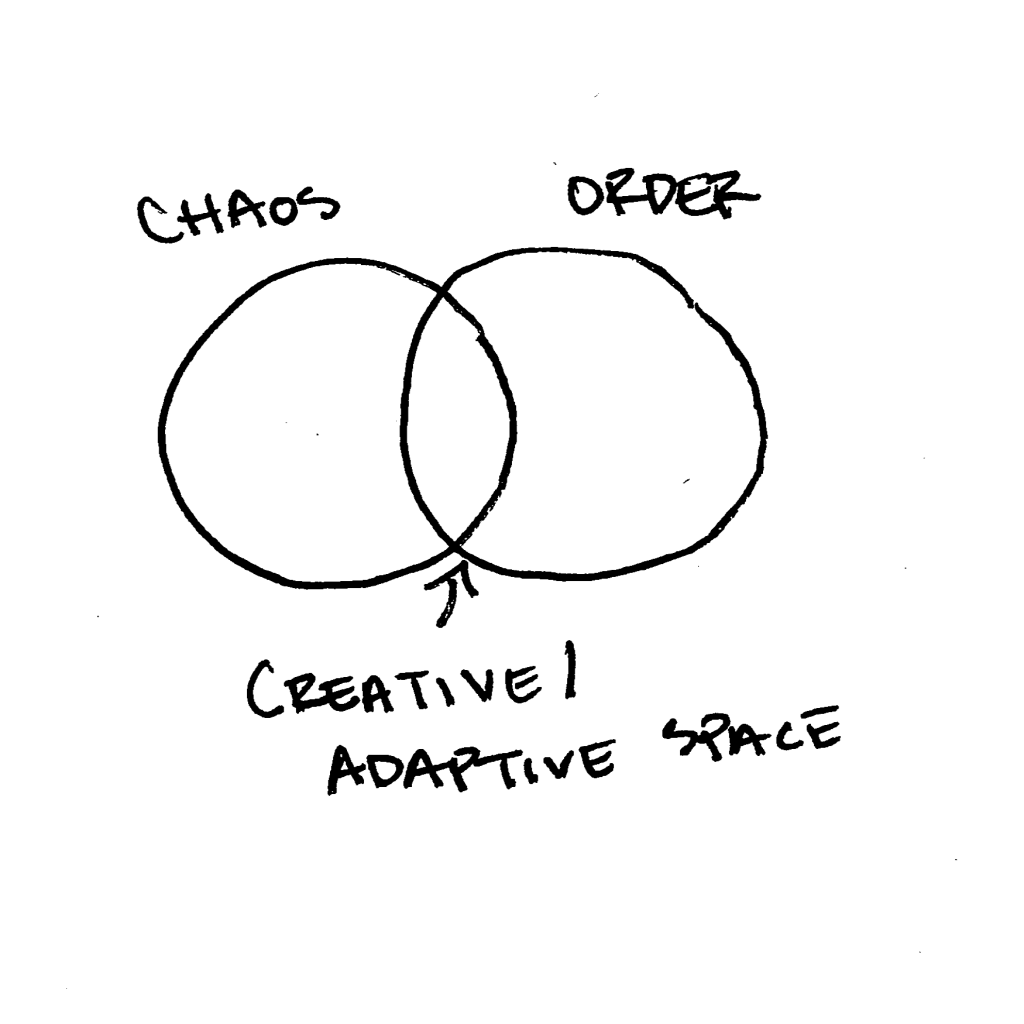Strategic planning is essential for individuals and organizations to maintain focus and achieve their goals. The process involves establishing goals to make the mission and vision more tangible, articulating strategies to accomplish those goals, and drawing up objectives as measurable means to achieve the stated strategies.

In today’s fast-paced world, organizations must remain agile and adaptable to change while focusing on long-term objectives. Strategic plans provide the roadmap organizations need to navigate these challenges and stay on course.
In previous posts, we examined how to use strategic plans to connect individual contributors to an agency’s mission and how strategic plans can maintain discipline and encourage accountability. This post will discuss how strategic plans and the planning process can enhance agility and promote adaptability.
Walking the Chaordic Path

On their face, “maintaining discipline” and “encouraging agility and adaptability” may seem in conflict. They could be. But at least one highly successful leader saw it differently. Dee Hock served as founder and CEO of the Visa credit card association. As an association, Visa was highly decentralized — like most governments; but it also required cooperation and coordination to succeed — again, like most governments. Hock came to appreciate the creative tension found in this duality within his organization, coining the term “chaordic” from the words “chaos” and “order.”
Public managers and leaders often operate in the balance of these two spheres. To push forward and innovate, they must rebel against the comfort of order and control while avoiding the temptation of slipping too far into the dangerous world of chaos — for what is government if not a tool to protect against the nasty, brutish, and short-lived life found in nature? The sweet spot lies in the middle.
Strategic Planning and Plans as Agents of Order and Chaos
Clear goals and priorities are essential in focusing our efforts — adding order to the chaos. This is imperative because understanding how and where to maximize resources becomes challenging without clear strategies and objectives. But, because order is arguably the default position of most governments, ambiguous and stagnant plans often perpetuate past decisions instead of acting on new information and toward new goals.
Just as an overly chaotic world can hinder progress by stopping us before we get started, an overly constrained world poses a different challenge.
In the last post, we used a roadmap as a metaphor for helping us reach our destination. By and large, paper roadmaps are a thing of the past, though, and for a good reason. Anyone who’s ever been stuck in a traffic jam on their way to catch a flight can tell you why. When the current path isn’t working, having a guide show you an alternate route, or introduce a little adaptation, is beneficial.
Today we still use maps, but GPS powers those maps. The GPS provides a strategic framework that helps us identify a clear goal and offers us flexible tools. We target the same destination, but by adding the possibility for alternate routes and continual review of our progress, we can avoid obstacles and delays, thereby getting there more efficiently and maximizing value.
A good strategic plan includes goals (our intended destination) and strategies (our primary routes). And a good planning process will help identify various objectives or measurable means to assess progress toward a given strategy. But, perhaps most importantly, a seasoned navigator accepts that when you don’t see progress toward objectives, it’s time to adjust the course.
Knowing When to Course Correct
Check-ins offer an opportunity to adjust tactical steps when outcomes aren’t being met. While it may not be prudent to continually check progress towards objectives like an app on your phone is constantly checking various routes to your destination, we certainly can benefit from regular check-ins. Annual (or better yet, biennial) budget processes are a natural time to review tactics, the steps that advance strategies.
At our check-in, we ask ourselves: Have we fulfilled our planned objectives? And we must determine if we have accomplished our tactics as part of that review. If tactics are complete, but objectives are unfulfilled, we may need to chart a new course. If tactics haven’t gotten off the ground, we still may need to plan a new course or bring in different resources to help accomplish the work. The flexibility to get creative and adaptive with our work comes from the strong — and risk-mitigated — framework set with goals and strategies balanced against the ever-changing environment in which we’re operating.
Returning to Latent Power
Once again, this series of posts reminds you: Strategic plans are an exercise in latent power. There’s a ton of power in setting strategy — because that strategy can bring order to the chaotic world of public administration. But if we treat a strategic plan like an as-seen-on-TV rotisserie barbecue, setting it and then forgetting it, we’re leaving much power on the table. Just as we can’t operate without a plan, we shouldn’t ignore the signs that plan may need adjusting. If your strategic planning process doesn’t include periodic check-ins to ensure you’re still on the best path, now is the time to change it.
Micah Intermill is Founder + Principal at GovStrategist LLC, a consulting firm providing strategic management, public finance, and executive coaching services to local governments and state agencies. With nearly two decades of experience in and around the public sector, Micah was previously Director of Solutions Engineering at OpenGov, Budget Director for the City of Minneapolis, and Chief Financial Officer for the State of Minnesota’s Department of Administration. Micah holds a Master’s in Public Policy from the University of Minnesota’s Humphrey School of Public Affairs and a Bachelor’s Degree in Journalism from the University of Nebraska.





Leave a Reply
You must be logged in to post a comment.